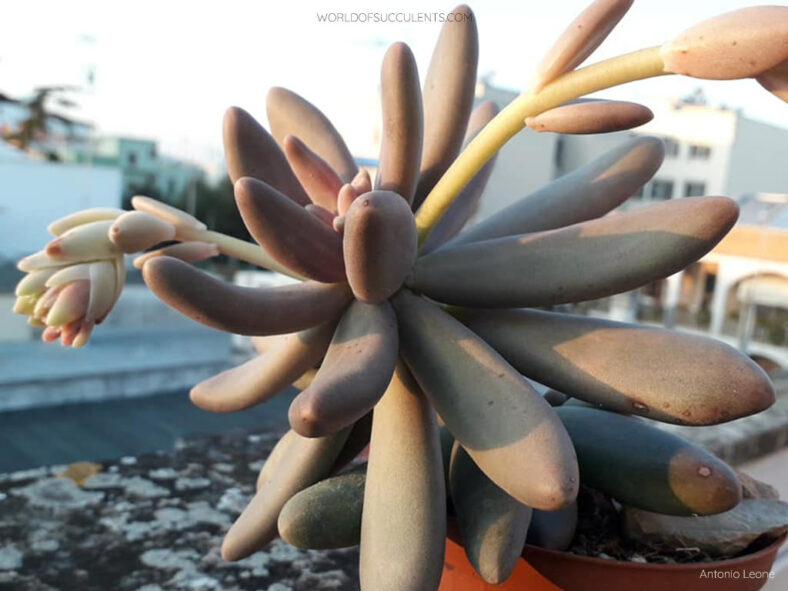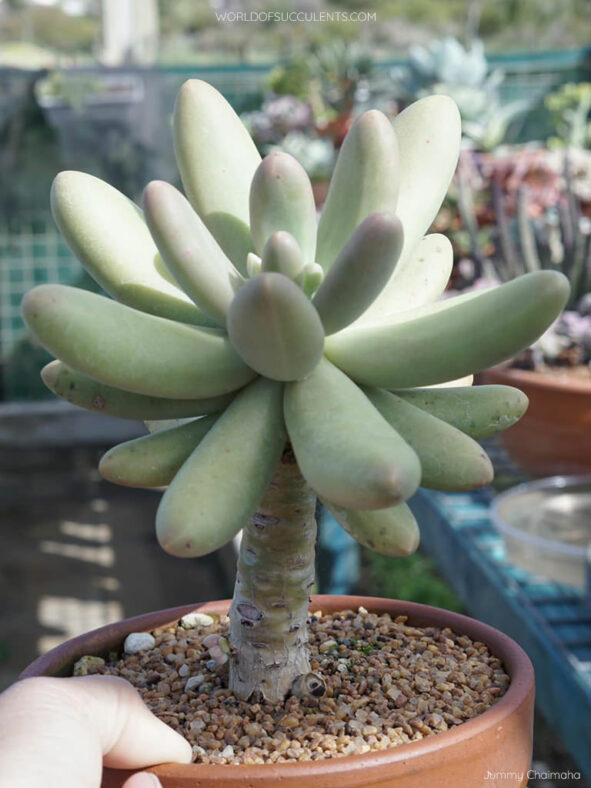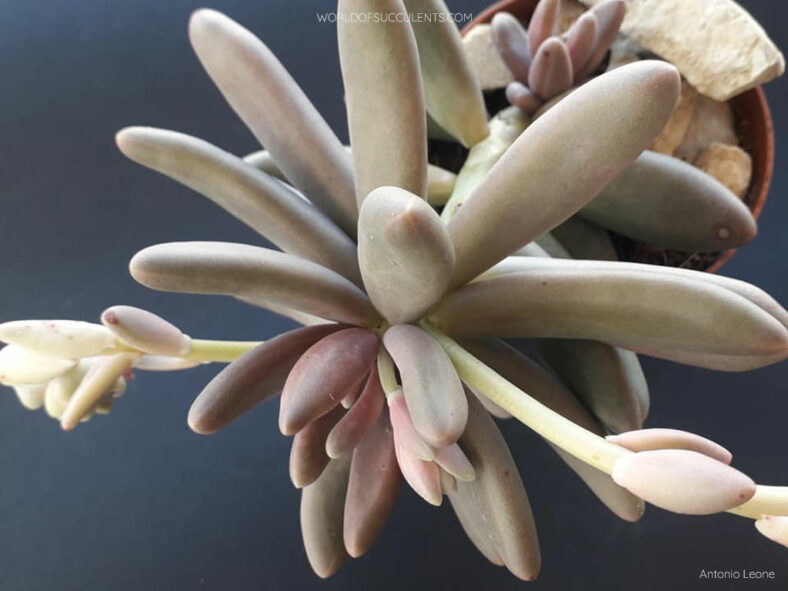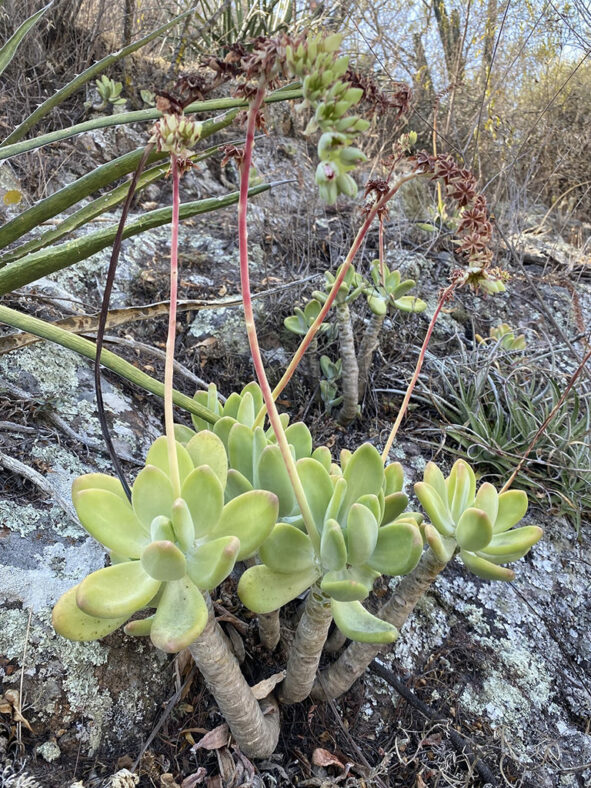Pachyphytum fittkaui was discovered by Father Hans Fittkau in Guanajuato in 1968.
Scientific Name
Pachyphytum fittkaui Moran
Scientific Classification
Family: Crassulaceae
Subfamily: Sedoideae
Tribe: Sedeae
Subtribe: Sedinae
Genus: Pachyphytum
Etymology
The specific epithet "fittkaui (pronounced fit-KAU-eye)" honors Hans Werner Fittkau (1913-2002), a German priest and botanist.
Origin
Pachyphytum fittkaui is native to Mexico. It grows on south-facing cliffs in eastern Guanajuato and southern San Luis Potosí at elevations that range from 3,940 to 6,890 feet (1,200 to 2,100 m).
Description
Pachyphytum fittkaui is a shrubby succulent with fleshy, finger-like leaves that grow in rosettes at the end of the stems. It is one of the largest species in the genus, with stems growing up to 3.3 feet (1 m) long and 1.4 inches (3.5 cm) in diameter, mostly branched from the base. Initially erect, the stems become decumbent or pendent with age. The rosettes can reach up to 8 inches (20 cm) in diameter. The leaves are deep green to bluish-green, with a somewhat violet-red blush when exposed to direct sunlight, and can measure up to 3.8 inches (9.5 cm) long and 0.6 inches (1.5 cm) thick.
In late winter, Pachyphytum fittkaui produces bell-shaped flowers with large, unequal sepals, the same color as the leaves, that clasp the deep rose-colored petals. The flowers can reach a length of up to 0.9 inches (2.3 cm) and a diameter of 0.6 inches (1.5 cm). They appear on arching, violet-red stalks with leaf-like bracts. The stalks can grow up to 22 inches (55 cm) long.

How to Grow and Care for Pachyphytum fittkaui
Light: Pachyphytum fittkaui thrives when exposed to direct sunlight. While it can tolerate partial shade, it may result in slightly rangy growth. When growing indoors, keep it near a sunny window.
Soil: This plant requires good drainage to maintain a healthy root system. While many growers prefer to create their own soil mix, commercial soil for succulents will work fine.
Temperature: Pachyphytum fittkaui is a winter grower and will stop actively growing when it warms up. It grows best in USDA Plant Hardiness Zones 10a to 11b, with average minimum winter temperatures ranging from 30 to 50 °F (-1.1 to 10 °C).
Watering: Although a winter grower, this plant is most active during spring and fall. Water thoroughly, then wait for the soil to dry out completely before watering again. During the winter, water sparingly. As the plant goes dormant in spring, it does not need to be watered except for arid conditions.
Fertilizing: To promote healthy growth and flower production, apply a water-soluble fertilizer diluted to half the recommended strength during the growing season.
Repotting: If growing Pachyphytum fittkaui in a container, repot it in a pot with drainage holes when it outgrows its pot. Give the plant a week or so to readjust before you water it.
Propagation: The easiest method to propagate this plant is by stem cuttings, although it can also be propagated from leaves and seeds. Even a leaf that drops off will root below the parent plant and produce a new plant. For best results, take cuttings in the spring and sow the seeds in the spring and summer.
Learn more at How to Grow and Care for Pachyphytum.
Toxicity of Pachyphytum fittkaui
Pachyphytum fittkaui is generally non-toxic to humans and pets.
Links
- Back to genus Pachyphytum
- Succupedia: Browse succulents by Scientific Name, Common Name, Genus, Family, USDA Hardiness Zone, Origin, or cacti by Genus
Photo Gallery
Click on a photo to see a larger version.


